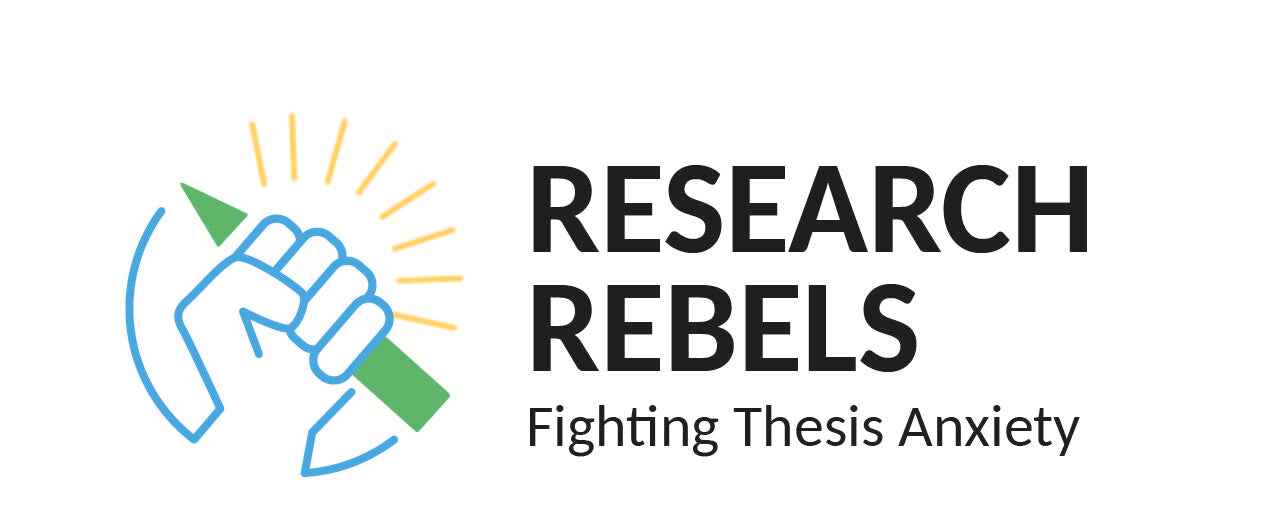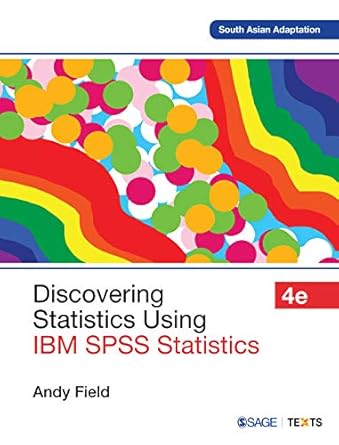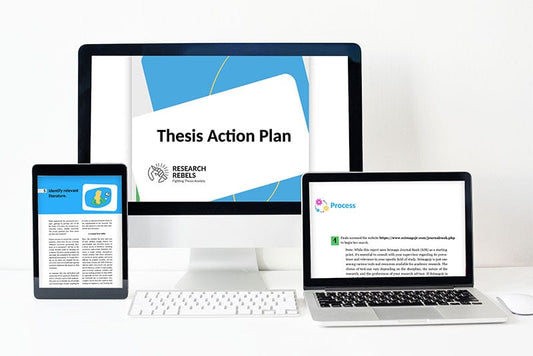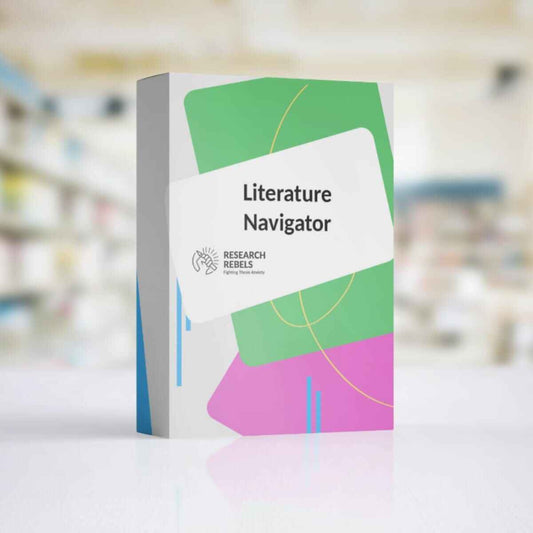Navigating the Literature Review Process: Tips and Strategies

Navigating the Literature Review Process: Tips and Strategies
Overview
What is a literature review?
A literature review is like a treasure hunt where you get to explore the vast landscape of existing research. It's your chance to dive into the world of scholarly articles, books, and other sources to uncover valuable insights and knowledge. You are the detective, searching for clues and piecing together the puzzle of what others have discovered. Through the literature review process, you will gain a deeper understanding of the topic and identify gaps that can be addressed in future research.
Why are literature reviews important?
Literature reviews are essential in research because they provide a comprehensive understanding of existing knowledge on a particular topic. They help you identify gaps in the literature, which can guide your research questions and contribute to the advancement of knowledge. By critically evaluating and synthesizing various sources, literature reviews allow you to build a strong foundation for your own research. Additionally, they help you avoid duplicating previous studies and ensure that your work adds value to the existing body of literature. Overall, literature reviews play a crucial role in shaping your research project and demonstrating your familiarity with the relevant literature.
Key components of a literature review
When writing a literature review, it is important to consider the key components that make it effective. These components include defining the research question, identifying relevant sources, evaluating the credibility of sources, organizing and analyzing the literature, and synthesizing the information. By addressing these components, you can ensure that your literature review is comprehensive and provides a solid foundation for your research. Remember to keep these components in mind as you navigate the literature review process!
Finding Relevant Sources
Identifying search terms
Now that you have a clear understanding of what you're looking for, it's time to identify search terms that will help you find relevant sources. Start by brainstorming keywords and phrases that are related to your topic. Think about different variations and synonyms that could be used. Once you have a list of potential search terms, you can start using them in databases and search engines to retrieve the most relevant articles. Remember to refine your search terms as you go along and explore different combinations to get the best results. Happy searching!
Using databases effectively
When it comes to using databases effectively, there are a few tips and tricks that can make your literature review process more efficient. First, make sure to choose the right databases for your topic. Second, use advanced search features to refine your results and save time. Third, take advantage of Boolean operators to combine search terms and narrow down your search. Lastly, don't forget to explore related articles and references from the sources you find. By following these strategies, you'll be able to navigate databases with ease and find the most relevant sources for your literature review.
Evaluating sources for credibility
When evaluating sources for credibility, it's important to consider factors such as the author's qualifications and expertise, the publication's reputation, and the presence of peer-reviewed articles. You can use a checklist or a set of criteria to assess the quality of each source. Look for reliable and up-to-date information that is relevant to your research topic. Remember, not all sources are created equal, so take the time to carefully evaluate each one before including it in your literature review.
Organizing and Analyzing Literature
Creating a literature review matrix
Now that you've gathered a substantial amount of literature, it's time to create a literature review matrix to organize and analyze your sources. A literature review matrix is a table that allows you to compare and contrast different sources based on their key characteristics, such as the research questions, methodologies, and findings. By using a matrix, you can easily identify common themes and patterns across the literature, which will help you synthesize the information more effectively. To create a literature review matrix, start by listing the key components of your review as column headers and the sources as rows. Then, fill in the matrix with relevant information from each source. This process will not only help you organize your thoughts but also ensure that you don't miss any important details. Remember, a well-structured literature review matrix is the key to a successful literature review!
Identifying themes and patterns
Once you have gathered a substantial amount of literature, it's time to start identifying themes and patterns. This step is crucial in organizing your literature review and gaining a deeper understanding of the topic. One effective way to do this is by creating a literature review matrix. This matrix allows you to compare and contrast different sources based on their key findings, methodologies, and conclusions. As you analyze the literature, look for recurring ideas, common arguments, and trends that emerge. These themes and patterns will help you synthesize the information and provide a coherent narrative in your literature review. Remember, the goal is to present a comprehensive and well-structured review that highlights the key insights from the literature.
Synthesizing information
Now that you have gathered a wealth of information from various sources, it's time to put it all together and synthesize the findings. This step involves analyzing the data you have collected, identifying common themes and patterns, and drawing connections between different sources. One effective way to organize your thoughts is by creating a literature review matrix, which allows you to compare and contrast the key points of each source. As you synthesize the information, keep in mind the purpose of your literature review and how it contributes to the overall understanding of your research topic. By synthesizing the information, you will be able to highlight the key findings and provide a comprehensive overview of the existing literature in your field.
Conclusion
Summarizing key findings
After summarizing the key findings, it's time to take a step back and reflect on what you have discovered. Look for common themes and patterns that emerge from the literature. Highlight the most significant points and compare them with your research question or objective. This will help you draw meaningful conclusions and identify any gaps in the existing literature. Remember, a literature review is not just a summary of what others have said, but an opportunity to contribute your own insights and ideas to the field of study.
Identifying gaps in the literature
Now that you have analyzed and synthesized the existing literature, it's time to identify gaps that need further exploration. These gaps represent areas where more research is needed or where existing research is limited. One effective way to identify gaps is by comparing the findings from different sources and looking for inconsistencies or unanswered questions. Another approach is to consider the limitations or shortcomings of the existing studies. By identifying gaps in the literature, you can contribute to the knowledge base and propose new avenues for future research.
Implications for future research
Now that you have explored the existing literature and identified the gaps, it's time to consider the implications for future research. This is your chance to propose new ideas, methodologies, or areas of study that can contribute to the field. Think about how your findings can address the unanswered questions or provide new insights. Don't be afraid to think outside the box and challenge conventional wisdom. Remember, the future of research lies in your hands!
In conclusion, if you want to stay connected with your friends, family, and interests from around the world, sign in to Instagram. With Instagram, you can check out what your loved ones have been capturing and sharing. Don't miss out on the latest updates and moments that matter to you. Join the Instagram community today!
Navigating the Literature Review Process: Tips and Strategies

Navigating the Literature Review Process: Tips and Strategies
Overview
What is a literature review?
A literature review is like a treasure hunt where you get to explore the vast landscape of existing research. It's your chance to dive into the world of scholarly articles, books, and other sources to uncover valuable insights and knowledge. You are the detective, searching for clues and piecing together the puzzle of what others have discovered. Through the literature review process, you will gain a deeper understanding of the topic and identify gaps that can be addressed in future research.
Why are literature reviews important?
Literature reviews are essential in research because they provide a comprehensive understanding of existing knowledge on a particular topic. They help you identify gaps in the literature, which can guide your research questions and contribute to the advancement of knowledge. By critically evaluating and synthesizing various sources, literature reviews allow you to build a strong foundation for your own research. Additionally, they help you avoid duplicating previous studies and ensure that your work adds value to the existing body of literature. Overall, literature reviews play a crucial role in shaping your research project and demonstrating your familiarity with the relevant literature.
Key components of a literature review
When writing a literature review, it is important to consider the key components that make it effective. These components include defining the research question, identifying relevant sources, evaluating the credibility of sources, organizing and analyzing the literature, and synthesizing the information. By addressing these components, you can ensure that your literature review is comprehensive and provides a solid foundation for your research. Remember to keep these components in mind as you navigate the literature review process!
Finding Relevant Sources
Identifying search terms
Now that you have a clear understanding of what you're looking for, it's time to identify search terms that will help you find relevant sources. Start by brainstorming keywords and phrases that are related to your topic. Think about different variations and synonyms that could be used. Once you have a list of potential search terms, you can start using them in databases and search engines to retrieve the most relevant articles. Remember to refine your search terms as you go along and explore different combinations to get the best results. Happy searching!
Using databases effectively
When it comes to using databases effectively, there are a few tips and tricks that can make your literature review process more efficient. First, make sure to choose the right databases for your topic. Second, use advanced search features to refine your results and save time. Third, take advantage of Boolean operators to combine search terms and narrow down your search. Lastly, don't forget to explore related articles and references from the sources you find. By following these strategies, you'll be able to navigate databases with ease and find the most relevant sources for your literature review.
Evaluating sources for credibility
When evaluating sources for credibility, it's important to consider factors such as the author's qualifications and expertise, the publication's reputation, and the presence of peer-reviewed articles. You can use a checklist or a set of criteria to assess the quality of each source. Look for reliable and up-to-date information that is relevant to your research topic. Remember, not all sources are created equal, so take the time to carefully evaluate each one before including it in your literature review.
Organizing and Analyzing Literature
Creating a literature review matrix
Now that you've gathered a substantial amount of literature, it's time to create a literature review matrix to organize and analyze your sources. A literature review matrix is a table that allows you to compare and contrast different sources based on their key characteristics, such as the research questions, methodologies, and findings. By using a matrix, you can easily identify common themes and patterns across the literature, which will help you synthesize the information more effectively. To create a literature review matrix, start by listing the key components of your review as column headers and the sources as rows. Then, fill in the matrix with relevant information from each source. This process will not only help you organize your thoughts but also ensure that you don't miss any important details. Remember, a well-structured literature review matrix is the key to a successful literature review!
Identifying themes and patterns
Once you have gathered a substantial amount of literature, it's time to start identifying themes and patterns. This step is crucial in organizing your literature review and gaining a deeper understanding of the topic. One effective way to do this is by creating a literature review matrix. This matrix allows you to compare and contrast different sources based on their key findings, methodologies, and conclusions. As you analyze the literature, look for recurring ideas, common arguments, and trends that emerge. These themes and patterns will help you synthesize the information and provide a coherent narrative in your literature review. Remember, the goal is to present a comprehensive and well-structured review that highlights the key insights from the literature.
Synthesizing information
Now that you have gathered a wealth of information from various sources, it's time to put it all together and synthesize the findings. This step involves analyzing the data you have collected, identifying common themes and patterns, and drawing connections between different sources. One effective way to organize your thoughts is by creating a literature review matrix, which allows you to compare and contrast the key points of each source. As you synthesize the information, keep in mind the purpose of your literature review and how it contributes to the overall understanding of your research topic. By synthesizing the information, you will be able to highlight the key findings and provide a comprehensive overview of the existing literature in your field.
Conclusion
Summarizing key findings
After summarizing the key findings, it's time to take a step back and reflect on what you have discovered. Look for common themes and patterns that emerge from the literature. Highlight the most significant points and compare them with your research question or objective. This will help you draw meaningful conclusions and identify any gaps in the existing literature. Remember, a literature review is not just a summary of what others have said, but an opportunity to contribute your own insights and ideas to the field of study.
Identifying gaps in the literature
Now that you have analyzed and synthesized the existing literature, it's time to identify gaps that need further exploration. These gaps represent areas where more research is needed or where existing research is limited. One effective way to identify gaps is by comparing the findings from different sources and looking for inconsistencies or unanswered questions. Another approach is to consider the limitations or shortcomings of the existing studies. By identifying gaps in the literature, you can contribute to the knowledge base and propose new avenues for future research.
Implications for future research
Now that you have explored the existing literature and identified the gaps, it's time to consider the implications for future research. This is your chance to propose new ideas, methodologies, or areas of study that can contribute to the field. Think about how your findings can address the unanswered questions or provide new insights. Don't be afraid to think outside the box and challenge conventional wisdom. Remember, the future of research lies in your hands!
In conclusion, if you want to stay connected with your friends, family, and interests from around the world, sign in to Instagram. With Instagram, you can check out what your loved ones have been capturing and sharing. Don't miss out on the latest updates and moments that matter to you. Join the Instagram community today!
Navigating the Literature Review Process: Tips and Strategies

Navigating the Literature Review Process: Tips and Strategies
Overview
What is a literature review?
A literature review is like a treasure hunt where you get to explore the vast landscape of existing research. It's your chance to dive into the world of scholarly articles, books, and other sources to uncover valuable insights and knowledge. You are the detective, searching for clues and piecing together the puzzle of what others have discovered. Through the literature review process, you will gain a deeper understanding of the topic and identify gaps that can be addressed in future research.
Why are literature reviews important?
Literature reviews are essential in research because they provide a comprehensive understanding of existing knowledge on a particular topic. They help you identify gaps in the literature, which can guide your research questions and contribute to the advancement of knowledge. By critically evaluating and synthesizing various sources, literature reviews allow you to build a strong foundation for your own research. Additionally, they help you avoid duplicating previous studies and ensure that your work adds value to the existing body of literature. Overall, literature reviews play a crucial role in shaping your research project and demonstrating your familiarity with the relevant literature.
Key components of a literature review
When writing a literature review, it is important to consider the key components that make it effective. These components include defining the research question, identifying relevant sources, evaluating the credibility of sources, organizing and analyzing the literature, and synthesizing the information. By addressing these components, you can ensure that your literature review is comprehensive and provides a solid foundation for your research. Remember to keep these components in mind as you navigate the literature review process!
Finding Relevant Sources
Identifying search terms
Now that you have a clear understanding of what you're looking for, it's time to identify search terms that will help you find relevant sources. Start by brainstorming keywords and phrases that are related to your topic. Think about different variations and synonyms that could be used. Once you have a list of potential search terms, you can start using them in databases and search engines to retrieve the most relevant articles. Remember to refine your search terms as you go along and explore different combinations to get the best results. Happy searching!
Using databases effectively
When it comes to using databases effectively, there are a few tips and tricks that can make your literature review process more efficient. First, make sure to choose the right databases for your topic. Second, use advanced search features to refine your results and save time. Third, take advantage of Boolean operators to combine search terms and narrow down your search. Lastly, don't forget to explore related articles and references from the sources you find. By following these strategies, you'll be able to navigate databases with ease and find the most relevant sources for your literature review.
Evaluating sources for credibility
When evaluating sources for credibility, it's important to consider factors such as the author's qualifications and expertise, the publication's reputation, and the presence of peer-reviewed articles. You can use a checklist or a set of criteria to assess the quality of each source. Look for reliable and up-to-date information that is relevant to your research topic. Remember, not all sources are created equal, so take the time to carefully evaluate each one before including it in your literature review.
Organizing and Analyzing Literature
Creating a literature review matrix
Now that you've gathered a substantial amount of literature, it's time to create a literature review matrix to organize and analyze your sources. A literature review matrix is a table that allows you to compare and contrast different sources based on their key characteristics, such as the research questions, methodologies, and findings. By using a matrix, you can easily identify common themes and patterns across the literature, which will help you synthesize the information more effectively. To create a literature review matrix, start by listing the key components of your review as column headers and the sources as rows. Then, fill in the matrix with relevant information from each source. This process will not only help you organize your thoughts but also ensure that you don't miss any important details. Remember, a well-structured literature review matrix is the key to a successful literature review!
Identifying themes and patterns
Once you have gathered a substantial amount of literature, it's time to start identifying themes and patterns. This step is crucial in organizing your literature review and gaining a deeper understanding of the topic. One effective way to do this is by creating a literature review matrix. This matrix allows you to compare and contrast different sources based on their key findings, methodologies, and conclusions. As you analyze the literature, look for recurring ideas, common arguments, and trends that emerge. These themes and patterns will help you synthesize the information and provide a coherent narrative in your literature review. Remember, the goal is to present a comprehensive and well-structured review that highlights the key insights from the literature.
Synthesizing information
Now that you have gathered a wealth of information from various sources, it's time to put it all together and synthesize the findings. This step involves analyzing the data you have collected, identifying common themes and patterns, and drawing connections between different sources. One effective way to organize your thoughts is by creating a literature review matrix, which allows you to compare and contrast the key points of each source. As you synthesize the information, keep in mind the purpose of your literature review and how it contributes to the overall understanding of your research topic. By synthesizing the information, you will be able to highlight the key findings and provide a comprehensive overview of the existing literature in your field.
Conclusion
Summarizing key findings
After summarizing the key findings, it's time to take a step back and reflect on what you have discovered. Look for common themes and patterns that emerge from the literature. Highlight the most significant points and compare them with your research question or objective. This will help you draw meaningful conclusions and identify any gaps in the existing literature. Remember, a literature review is not just a summary of what others have said, but an opportunity to contribute your own insights and ideas to the field of study.
Identifying gaps in the literature
Now that you have analyzed and synthesized the existing literature, it's time to identify gaps that need further exploration. These gaps represent areas where more research is needed or where existing research is limited. One effective way to identify gaps is by comparing the findings from different sources and looking for inconsistencies or unanswered questions. Another approach is to consider the limitations or shortcomings of the existing studies. By identifying gaps in the literature, you can contribute to the knowledge base and propose new avenues for future research.
Implications for future research
Now that you have explored the existing literature and identified the gaps, it's time to consider the implications for future research. This is your chance to propose new ideas, methodologies, or areas of study that can contribute to the field. Think about how your findings can address the unanswered questions or provide new insights. Don't be afraid to think outside the box and challenge conventional wisdom. Remember, the future of research lies in your hands!
In conclusion, if you want to stay connected with your friends, family, and interests from around the world, sign in to Instagram. With Instagram, you can check out what your loved ones have been capturing and sharing. Don't miss out on the latest updates and moments that matter to you. Join the Instagram community today!

















